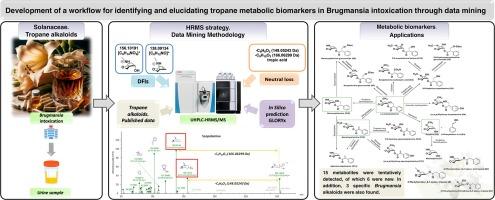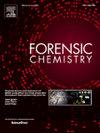Potential of high-resolution mass spectrometry for identification and structural elucidation of scopolamine metabolomic biomarkers in a confirmed case of Brugmansia intoxication. Specially application in drug-facilitated crimes
Abstract
In forensic toxicology, scopolamine remains as one of the most challenging alkaloid in terms of analytical detection. Given its rapid elimination, the detection window in common matrices is short. Taking advantage of a real case of Brugmansia intoxication, a metabolic study was carried out. We report the real case of a 16-year-old boy admitted to an Emergency Unit after consumption at high school of a beverage made of Brugmansia dried flowers. The medical staff noticed agitation, mydriasis and tachycardia. Scopolamine and atropine were positively detected in biological fluids using liquid chromatography coupled with high-resolution mass spectrometry (UHPLC-HRMS/MS). To better characterize the intake and identify metabolic biomarkers, we developed a data mining workflow specific to tropane alkaloids and applied it to the urine sample. This metabolic profile may be useful in providing analytical methods with a wider detection window particularly in drug-facilitated crimes (DFC). Scopolamine and atropine metabolites were predicted in silico with GLORYx freeware to assist in metabolite identification. The previously published metabolic pathways for scopolamine and atropine in mammals were studied as well. A total of fifteen phase I and II metabolites were tentatively identified for scopolamine, while one metabolite was detected for atropine. In addition, we identified some tropane alkaloids from the plant that were also metabolized. These metabolites can be used as biomarkers of exposure to Solanaceae plants and may also be useful to distinguish between natural product use and clinical therapy.


 求助内容:
求助内容: 应助结果提醒方式:
应助结果提醒方式:


